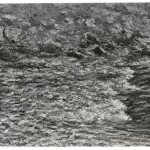
It’s staggering to realize that a conflict that ended nearly seven decades ago is still shaping so much of our lives. Politics, demographics, ethnic relations – the way we think of all these things, and many more, can be traced to the war that ravaged the world between 1939 and 1945.
The reasons for this are complex and varied. They involve the tensions among the victorious Allies, the rise (and later fall) of the Soviet Union, the realpolitik of the dismantling of empires.
The war and its aftermath have also impacted the art world, and unlike with the previous examples, the reasons were simple: Hitler fancied himself a collector. So did Goering and many other lesser princes of the Nazi party.
were simple: Hitler fancied himself a collector. So did Goering and many other lesser princes of the Nazi party.
When Europe lay at their feet, and with untold millions of Jews, intellectuals and other “undesirables” dying in concentration camps, these fascist savants were free to help themselves to the cream of European art.
And that’s what they did, plundering vast public and private collections throughout the continent, like the conquering thugs they were.
Much of that story has been told, and told well, in extraordinary historical accounts including Lynn Nicholas’s 1995 book, The Rape of Europa.
1995 book, The Rape of Europa.
But as is true with so many legacies of World War II, the story is ongoing. The New York Times this week reported on the mystery of a missing 1889 Monet painting, “Torrent de la Creuse,” last known to have been seized by the Gestapo in 1941. Two wealthy French clans continue to battle over this artwork, in the courtrooms and on the front pages, with the descendants of the one-time owner of the painting accusing a family of prominent art dealers of being complicit in a decades-old cover-up.
painting, “Torrent de la Creuse,” last known to have been seized by the Gestapo in 1941. Two wealthy French clans continue to battle over this artwork, in the courtrooms and on the front pages, with the descendants of the one-time owner of the painting accusing a family of prominent art dealers of being complicit in a decades-old cover-up.
The Times story is fascinating and worth reading in its entirety. At its end, though, the mystery remains intact: where is the Monet?
In a larger vein, the same mystery holds true for many other cultural treasures. At least two Van Goghs, a Vermeer, a Klimt, a Degas – even an entire room of priceless amber panels – all have disappeared from history after being seized by the Nazis.
Some might be gone forever, trampled or burned or sunk to the bottom of the sea. Some are in museums, and might yet return to their rightful heirs, or at least countries of origin.
But some, far too many and possibly including that Monet, remain in the hands of private collectors. These collectors lie to themselves probably; they probably say the provenance is in doubt and in any case the war is long over.
They’re wrong. They perpetuate an injustice and in so doing they’re little better than the German plunderers from the ’40s. Until the Rape of Europa is redressed and all missing art is accounted for, a war crime – a crime against culture and against humanity – continues to be committed.
Pingback: Long Lost Leo? | Worden's Cultural Deconstruction
Pingback: A fine art conundrum | Worden's Cultural Deconstruction